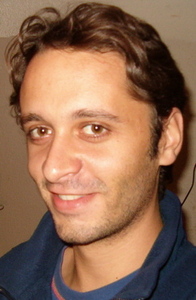


The properties of a Superconductor / Insulator / Normal metal / Insulator / Superconductor (SINIS) structure, in presence of magnetic fields localized on the superconducting films in antiparallel configuration, allow to obtain an esotic situation of the conduction electrons present in the normal metal wire. The mesoscopic lenght of the normal metal wire drive the electrons out of the thermodinamical equilibrium and the contemporary presence of the magnetic fields differentiate the behaviour of the two spin species. In particular the two spin population have different effective temperatures (opportunely defined) and this particular situation is used to produce spin polarized current through a third NIS junctions. The effect of the electronic interaction, treated within the Boltzmann equation framework, does not destroy the differences between the behaviour of the two spin population, so we expect that the effect of spin polarization is roboust and obtainable in realistic structure.



The properties of a Superconductor / Insulator / Normal metal / Insulator / Superconductor (SINIS) structure, in presence of magnetic fields localized on the superconducting films in antiparallel configuration, allow to obtain an esotic situation of the conduction electrons present in the normal metal wire. The mesoscopic lenght of the normal metal wire drive the electrons out of the thermodinamical equilibrium and the contemporary presence of the magnetic fields differentiate the behaviour of the two spin species. In particular the two spin population have different effective temperatures (opportunely defined) and this particular situation is used to produce spin polarized current through a third NIS junctions. The effect of the electronic interaction, treated within the Boltzmann equation framework, does not destroy the differences between the behaviour of the two spin population, so we expect that the effect of spin polarization is roboust and obtainable in realistic structure.